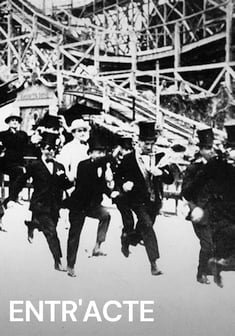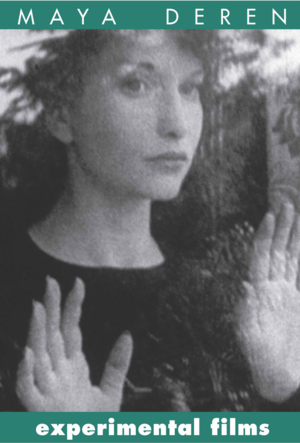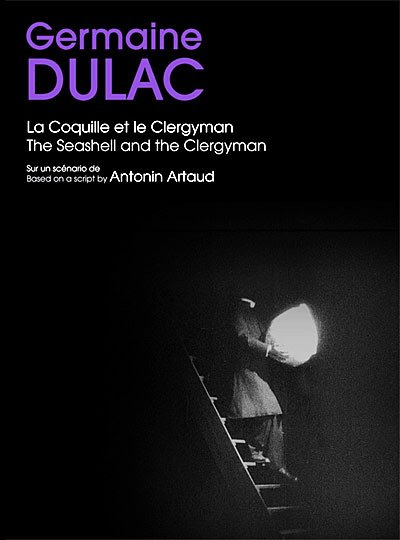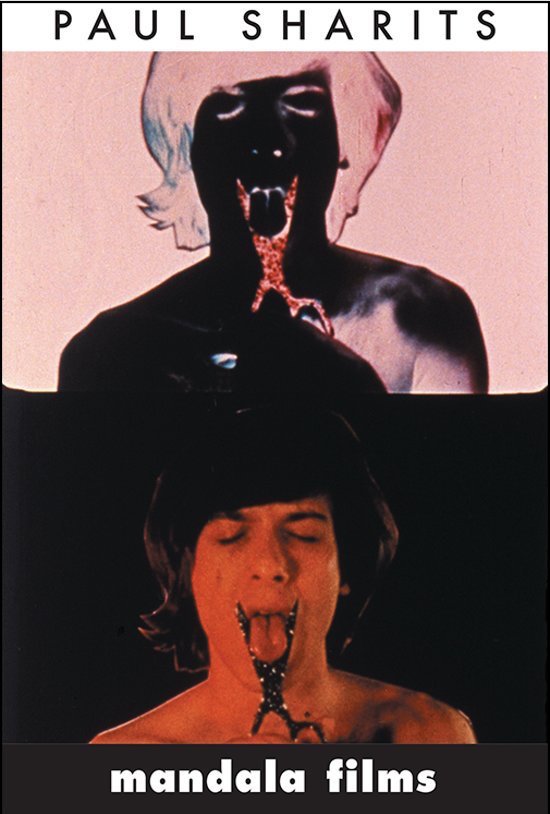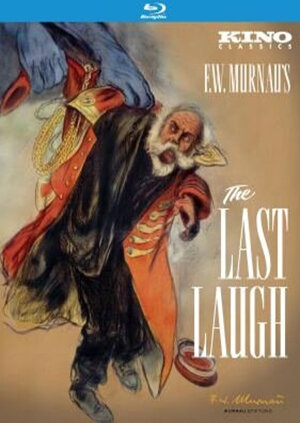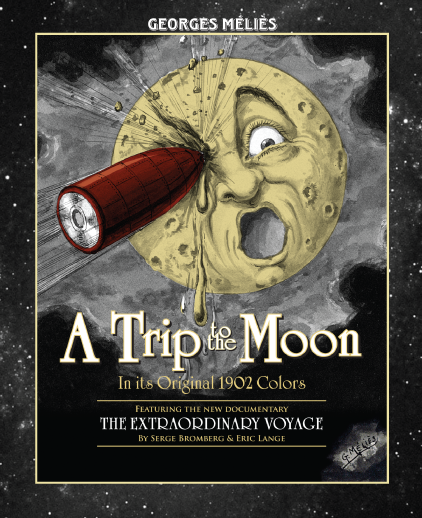GOATS and Other Great Films at GME
/In the spirit of the year-end lists of recent and retrospective, enduring film triumphs, GME is happy to share in some of the list-making and cinematic memories. Excitement and conversations (and arguments) stirred up by 2022’s prominent list highlights from BFI's Sight Sound has prompted us to round up a somewhat broader, consensus driven collection of films from across a diverse categorization of filmic art, the zone in which GME lives.
◊
From the area of experimental, avant-garde film as an art form, from filmmakers not entirely motivated by mass acceptance or popular culture, we find these 12 titles in GME’s catalog to be among the those frequently cited as the Greatest of All Time:
ANEMIC CINEMA
Rrose Sélavy (a.k.a. Marcel Duchamp) (US)
A singular work, as illuminating and emblematic of the entire range of painting, sculpture, games, and language games, of the speculative and poetic ventures produced by Duchamp, and reflective of a generation of ground-breaking surrealist and Dada art that influenced the development of film as art.
ANTICIPATION OF THE NIGHT
Stan Brakhage (1958, US)
"Imagine an eye unruled by man-made laws of perspective...but which must know each object encountered in life through an adventure of perception." (Stan Brakhage)
"Brakhage had reached [in ANTICIPATION OF THE NIGHT] "the threshold of his major innovations", comparing his "cinema of sight" to the emergence of Sergei Eisenstein's "cinema of intellection" in OCTOBER: TEN DAYS THAT SHOOK THE WORLD" (Annette Michelson).
AT LAND
Maya Deren (1944, US)
A film about Maya Deren's world and identity exploration, her curiosity to discover what is in there, criticizing the society at that time which was not curious to know if there was any truth besides television or Hollywood. At the end, Deren (the central character) chooses to return to the sea after her incessant odyssey at land to find an identity. Another of Deren's dream-like works, this one involving composer John Cage and the poet and film critic Parker Tyler in it's development.
AS I WAS MOVING AHEAD OCCASIONALLY I SAW BRIEF GLIMPSES OF BEAUTY
Jonas Mekas (2000, US)
"A first — the home movie as epic." (New York Times)
Compiled from Jonas Mekas' home movies, the film is an attempt by the director to re-construct his life through various home movies filmed over a period of about 30 years. Events shown in the film are things such as birthdays and picnics, as well as more landmark personal events such as the first steps of his children. Throughout the film Mekas offers his own commentary and insight on what the viewer is seeing.
BALLET MÉCHANIQUE
Fernand Léger & Dudley Murphy (1923-1924, US)
A Dadaist, post-Cubist art film and a significant moment in film history due to painter Léger’s pure experimentation with form and content. It is also an example of the Cinéma Pur movement, practiced at the time by Leger, René Clair and Hans Richter, who, with others, wanted to eliminate what they viewed as traditional interferences in their films such as plot, narrative and editing to manipulate the story. As an influential early experimentation in film history, BALLET MÉCHANIQUE was selected to be one of the first films to enter MoMA’s Film Library when it was established in 1935.
ENTR’ACTE
René Clair & Francis Picabia (1924, France)
Still one of the best-known avant-garde films of the 1920s, ENTR’ACTE was immediately heralded as a “cinematic masterpiece.” It stages a series of zany, disconnected scenes, including a chess match between Marcel Duchamp and Man Ray that is swept away by a jet of water, a dizzying roller coaster course, a hearse pulled by a camel, and a high-speed chase through Paris’s Luna Park. During its first public projection, this silent film was accompanied by an orchestra. The composer, Erik Satie, carefully pegged the music to each filmic sequence, thereby creating what the film’s director, René Clair, would later call “the first composition written for the cinema ‘shot by shot.’”
GHOSTS BEFORE BREAKFAST
Hans Richter (1927, Germany)
Pure vintage Dada. A humorous, delightful, grotesque in which ordinary objects rebel against their daily routine and, for a brief period of liberation, fallow their own laws. A bow-tie undoes itself, bowler hats float gracefully through the air, coffee cups leap from a tray to smash themselves on the ground, and so forth. At the stroke of noon, they return to their normal functional state. GHOSTS BEFORE BREAKFAST represents one of the earliest collaborations between avant-garde filmmaker Richter and composer Paul Hindemith.
MESHES OF THE AFTERNOON
Maya Deren (1943, US)
Maya Deren was one of the most pre-eminent avant-garde filmmakers of the 20th century; her first film MESHES OF THE AFTERNOON (1943), is the most renown experimental film throughout all of film history. She became known as a major proponent of the “trance” film, and her movies are a transitional link between the European avant-garde films of the 1920’s and the American avant-garde films of Kenneth Anger, Gregory Markopoulos, Stan Brakhage and others.
'RAMEAU'S NEPHEW' BY DIDEROT (THANX TO DENNIS YOUNG) BY WILMA SCHOEN
Michael Snow (1970-1974, Canada)
"For me, it is an authentic 'talking picture,' built from the true units of the syllable and the frame. All the possible image/sound relationships centering around people and speech generate the movie-audience relationships: a wide range of emotional possibilities; the experience of seeing/hearing this film. 'Speech,' 'Language,' 'Culture' - their sources, their nature... recorded, imaged, prove (?) that in this case a word is worth 1000 pictures." (Michael Snow)
OUTER SPACE
Peter Tscherkassky (1999, Austria)
The Austrian found footage auteur masterfully reworks sequences from Sidney J. Furie’s ’80s horror film THE ENTITY to craft this tactile and immersive examination of cinematic space. Tscherkassky creates a maelstrom of audiovisual fragments and shards that delightfully destroy narrative norms.
"The images jump and stutter, the perforation holes tilt into the picture, the sound track implodes in a will o' the wisp destruction scenario - something which only film can do so powerfully. In ten minutes, Peter Tscherkassky's OUTER SPACE races through the unsuspected possibilities of cinematographic errors - a masterpiece." (Stephan Grissemann)
THE SEASHELL AND THE CLERGYMAN
Germaine Dulac (1927, France)
THE SEASHELL AND THE CLERGYMAN is generally considered to be the first Surrealist film, even if at its Studio des Ursulines premiere, the Surrealist group provoked an uproar that would become one of the great “scandals” of the 1920s. Along with contemporary musical accompaniments, this DVD edition features a video account of the premiere and a presentation of the film and its importance in the history of cinema and feminism. Dulac writes: “My entire effort has been to search, in the action of Antonin Artaud’s script, for harmonic points, and to link them through well thought out and composed rhythms. I can say that not one image of the Clergyman was delivered by chance.” For Artaud, “It’s a film of pure images.”
This DVD release available from GME won the 2010 Il Cinema Ritrovato award for Best Best Critical Research on a DVD.
T,O,U,C,H,I,N,G
Paul Sharits (1968, US)
Paul Sharits’ 1968 “flicker” film uses avant-garde techniques of rapid cutting, color oscillation, and rhythmic sound to create an intense sensory experience. This kind of powerful stimulation was something that Sharits frequently wrote about as a key concept within his “cinematics”: his ideas about how film is capable of reorienting our perception in a way that classical narrative film could never do, because of the latter’s emphasis on spectacular illusion and passive immersion in narrative events. T,O,U,C,H,I,N,G is recognized as one of the most important structuralist films ever made, and as such also Paul Sharits's best-known short.
GME would also like to recognize, and call your attention to
THE UNITED STATES OF AMERICA
James Benning (2022, US)
James Benning's recent release was selected by Film Comment as one of the Best Undistributed Films of 2022. In his 79th year, Benning revisits his 1975 American landscape opus collaboration with Bette Gordon and recasts it onto a new canvas upon which histories can still be written. GME distributes 7 disk and DSL editions of Bennings work.
Among feature film releases, documentaries and shorts we find several outstanding works in our catalog, and many films by individual, auteur directors whose work has been noted on important lists of greatest films, and who have influenced generations of filmmakers and satisfied the demanding tastes of countless moviegoers. I'm sure you'll agree they are each deserving of this level of consideration and are likely to have most of them on your own GOAT lists.
BATTLESHIP POTEMKIN
Sergei Eisenstein (1926/1930, USSR)
A dramatized account of a great Russian naval mutiny and a resultant public demonstration, showing support, which brought on a police massacre. The film had an incredible impact on the development of cinema and is a masterful example of montage editing. A technical masterpiece, BATTLESHIP POTEMKIN is Soviet cinema at its finest, and its montage editing techniques remain influential to this day
BERLIN: SYMPHONY OF A GREAT CITY (BERLIN, DIE SINFONIE DER GROßSTADT) & MELODY OF THE WORLD (MELODIE DER WELT)
Walther Ruttmann (Germany)
Walther Ruttmann is a pioneer of modern multimedia art. His first short films are unique experiments with forms, colors, and rhythm; his innovative commercials connected abstract animation art with concrete messages. The city symphony, documentary BERLIN, DIE SINFONIE DER GROßSTADT is one of the most famous silent classics, a timeless demonstration of the cinema's ability to enthrall on a purely visceral level.
This DVD release available from GME won the 2009 Il Cinema Ritrovato award for Best Special Features on DVD (Bonus).
THE CONFORMIST
Bernardo Bertolucci (1970, Italy)
THE CONFORMIST is both a searing study of sexuality and politics set in 1930’s Italy and a triumph of opulent visual storytelling. Bertolucci combines a flawless aesthetic with a deep emphasis on composition, design, and camerawork to slowly build a devastating portrait of the kind of personality that allows fascism to flourish. The films unfolds as a series of flashbacks and flashbacks-within-flashbacks in service of a twisty plot with a distinctly noir flavor. The sheer extravagance of the film’s visual design — expressive lighting, lavish decor, sumptuous costumes, elaborate tracking shots — evokes the classic Hollywood studio cinema of Sternberg, Ophüls and Welles.
THE LAST LAUGH
F. W. Murnau (Germany)
One of the crowning achievements of the German expressionist movement, THE LAST LAUGH (DER LETZTE MANN 1924), directed by Friedrich Wilhelm Murnau (PHANTOM) and starring Emil Jannings as an aging hotel doorman whose happiness crumbles when he is relieved of the duties and uniform which had for years been the foundation of his happiness and pride. Through Jannings’s colossal performance, THE LAST LAUGH becomes more than the plight of a single doorman, but a mournful dramatization of the frustration and anguish of the universal working class.
LAST YEAR AT MARIENBAD
Alain Resnais (1961, France)
A hypnotically beautiful puzzle box of a film, and one of the most influential in history. Alan Resnais's sensuous tracking shots and Delphine Seyrig's iconic Chanel gowns have become part of the cinematic lexicon, and can now be seen in a gorgeous 4K restoration from StudioCanal. In a large international hotel in the European resort town of Marienbad, with a sumptuous but austere décor–a marble universe–a man (Giorgio Albertazzi) is convinced he met an enigmatic woman (Seyrig, JEANNE DIELMAN) the previous year at the same location, and perhaps had a flirtation. A second man (Sacha Pitoëff, INFERNO), possibly the woman's lover or husband, repeatedly intimidates the first man. Their relations unfold through flashback shards that never quite fit into place, their lives a hall of mirrors that never reveal a true self.
THE MAN WITH THE MOVIE CAMERA
Dziga Vertov (1929, USSR)
One of the most innovative and influential films of the silent era, Dziga Vertov’s THE MAN WITH THE MOVIE CAMERA utilizes rapid editing and innumerable other cinematic effects to create a work of amazing modernity and power. This dawn-to-dusk view of urban Soviet life shows people at work, at play, and at the machines that endlessly whirl to keep the metropolis alive. It was Vertov’s first full-length film, and it employs all the cinematic techniques at the director’s disposal—dissolves, split-screens, slow-motion, and freeze-frames—to produce a work that is as exhilarating as it is intellectually brilliant.
"I am an eye. A mechanical eye. I am the machine that reveals the world to you as only the machine can see it.” (Dziga Vertov)
NANOOK OF THE NORTH
Robert Flaherty (1922, US)
This pioneering documentary film depicts the lives of the indigenous Inuit people of Canada's northern Quebec region. Although the production contains some fictional elements, it vividly shows how its resourceful subjects survive in such a harsh climate, revealing how they construct their igloo homes and find food by hunting and fishing. The film also captures the beautiful, if unforgiving, frozen landscape of the Gr
A TRIP TO THE MOON
Georges Méliès (1902, France)
The first science fiction film was a 14 minute masterpiece, a light-hearted satire criticizing the conservative scientific community of its time, inspired by Jules Verne's From the Earth to the Moon (1865) and H. G. Wells' First Men in the Moon (1901). Georges Méliès wrote the whimsical script, acted in the film in the lead role, designed the sets and costumes, directed, photographed, and produced the film. He hired acrobats from the Folies Bergere to play the lunar inhabitants named Selenites, and the scantily dressed assistants (or pages) who launched the cannon were dancers from the Châtelet ballet. The image of the lunar capsule landing in the eye of the moon is a memorable sight and widely-recognized in cinematic history.
And these in addition to films by many directors whose work repeatedly appears on end of year and GOAT lists, including Charles Chaplin, Carl Th. Dreyer, Abel Gance, Jean-Luc Godard, Alfred Hitchcock, Georg Wilhelm Pabst, Erich von Stroheim, and Apichatpong Weerasethakul. These are just some of the outstanding film artists of the dozens that are represented and available from GME on disk and, in many cases, as DSL releases.
◊
In the 25 years since 1998, GME has prided itself on providing a boutique film appreciation experience, dedicated to ensuring that teachers, students, programmers, researchers, and film lovers can access a depth of work from pioneers of silent narrative cinema to cutting edge filmmakers of the contemporary avant-garde.
As 2023 unfolds, we hope to share more exciting, great cinematic work with you and to expand the idea and experience of the art of film, as we watch some new discoveries find their way onto future lists of the greatest films of all time.
Happy New Year!







